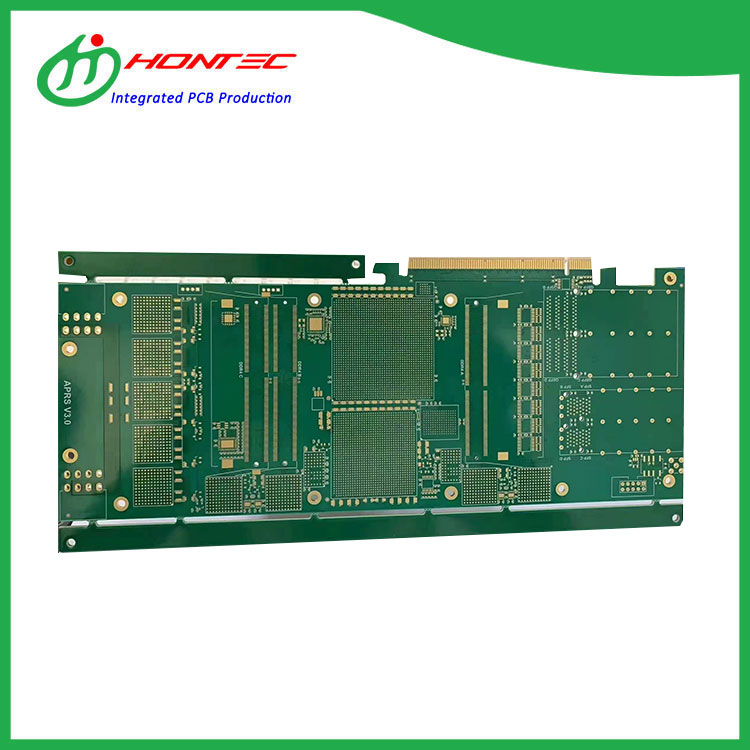The Rise of High-Speed PCBs: A Game-Changer in Electronics
2025-02-07
In the ever-evolving world of electronics, one component plays a crucial role in ensuring that devices work as efficiently and reliably as possible: the Printed Circuit Board (PCB). Over the years, PCBs have become more complex and specialized, with High-Speed PCBs emerging as a key player in powering the next generation of devices, from smartphones to advanced communication systems.
What is a High-Speed PCB?
A High-Speed PCB is designed to support high-frequency signals, typically above 1 GHz, which are commonly used in modern electronic applications such as telecommunications, data transmission, and high-performance computing. These boards are engineered to minimize signal degradation and electromagnetic interference (EMI) while maintaining signal integrity at high speeds.
Compared to traditional PCBs, high-speed versions require advanced materials, design considerations, and manufacturing processes to ensure optimal performance in systems that demand high data transfer rates and low latency.
Key Factors in Designing High-Speed PCBs
1. Material Selection
The material used in high-speed PCB design is critical. High-frequency laminate materials, such as FR4, PTFE, and Ceramic, offer low loss, low dielectric constants, and low signal attenuation, which are essential for high-speed signal transmission. The choice of material can significantly affect the PCB's overall performance and reliability.
2. Signal Integrity
Ensuring signal integrity is a fundamental aspect of high-speed PCB design. High-speed signals are susceptible to signal reflection, attenuation, and distortion, which can degrade performance. Designers must employ techniques like controlled impedance routing, differential signaling, and via minimization to preserve the quality of the signal as it travels through the board.
3. Trace Width and Spacing
The trace width and spacing on a high-speed PCB are vital to controlling impedance and ensuring that the electrical signals travel efficiently. The width of a trace affects its resistance and the amount of signal loss, while the spacing between traces determines how much coupling or crosstalk occurs between them. Careful calculation and simulation are required to ensure that the traces are designed optimally for the speed and type of signals they will carry.
4. Thermal Management
High-speed signals often generate significant amounts of heat, which can negatively affect the performance and lifespan of the PCB. Thermal management techniques, such as the use of thermal vias, copper planes, and heat sinks, are crucial in ensuring that the board remains cool and functional even under high-speed operating conditions.
5. Via Technology
Vias are an integral part of PCB design, but in high-speed PCBs, the use of vias can introduce unwanted signal delay and inductance. To address this, advanced via technologies such as blind vias, buried vias, and micro-vias are often used to reduce signal loss and improve overall performance.
Applications of High-Speed PCBs
High-speed PCBs are employed in a variety of cutting-edge technologies where high-frequency signals are critical for performance:
1. Telecommunications
The backbone of global communication relies on high-speed data transmission. High-speed PCBs are used in 5G networks, fiber-optic systems, and satellite communication equipment to ensure that data is transmitted quickly and accurately over long distances.
2. Computing and Data Centers
With the exponential growth of data and computing power, servers, cloud storage, and data centers require PCBs capable of handling high data rates. High-speed PCBs play a vital role in ensuring the integrity and speed of connections between processors, memory, and storage devices.
3. Consumer Electronics
From smartphones to gaming consoles, high-speed PCBs are found in a range of consumer electronics that demand fast data processing and smooth, uninterrupted performance. As devices continue to push the boundaries of performance, high-speed PCBs are essential for supporting new features and technologies.
4. Automotive Electronics
As autonomous vehicles and electric vehicles become more prevalent, high-speed PCBs are used in advanced driver assistance systems, infotainment systems, and electronic control units (ECUs) to ensure rapid data processing and real-time decision-making.
5. Medical Devices
High-speed PCBs are also critical in medical applications, such as MRI machines, CT scanners, and patient monitoring systems, where fast and accurate data processing is necessary for proper diagnostics and patient care.
The Future of High-Speed PCBs
As the demand for faster, more reliable electronic systems grows, the importance of high-speed PCBs will only increase. Emerging technologies like 5G, quantum computing, and Internet of Things (IoT) will require even more sophisticated PCB designs to meet the ever-increasing data throughput and performance requirements.
Moreover, with the rise of AI-driven design tools and simulation software, designing high-speed PCBs has become more efficient and precise, allowing engineers to better predict performance and minimize errors before the manufacturing process.
Conclusion
High-speed PCBs are at the forefront of modern electronic innovation, enabling the rapid transfer of data, supporting complex systems, and facilitating communication across the globe. As technology continues to advance, the design and manufacture of high-speed PCBs will remain a critical area of focus for engineers and manufacturers, driving the development of next-generation devices and applications. Whether it's for telecommunications, computing, automotive, or medical applications, high-speed PCBs are essential to the high-performance systems that power the future.



